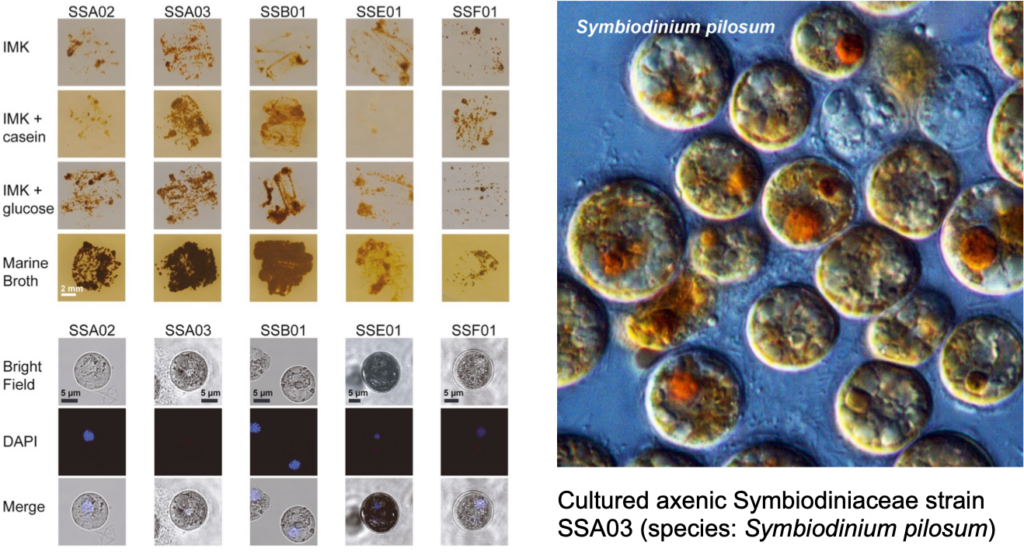Coral-algal symbiosis
Our laboratory is interested in answering fundamental questions about the biology of coral-algal symbiosis.
(1) What are the molecular components necessarily for the establishment and maintenance of coral-dinoflagellate symbiosis?
(2) How is the nutrient homeostasis maintained in dinoflagellate-coral symbiosis?
(3) What is the molecular mechanisms that underlie algal symbiont population control in the host tissue?

The dinoflagellate in the family Symbiodiniaceae forms a symbiotic relationship with many hosts including coral, anemones, jellyfish, and clams. They provide coral with photosynthetically fixed carbon while the coral supplies the algae with inorganic nutrients and a haven from predation.
Little is known about the mechanisms governing the establishment, maintenance and breakdown of the coral-dinoflagellate interaction.
We have been developing a proxy system for examining the coral mutualism in which the dinoflagellate symbiont Symbiodiniaceae is introduced into a clonal population of the host Aiptasia (Exaiptasia pallida), a small sea anemone closely related to corals.

- With clonal populations both of the Aiptasia anemone host and of the potential symbionts, we can remove the confounding factor of genetic heterogeneity from our studies.
- With axenic Symbiodiniaceae cultures, we can also remove the interference that contaminants could otherwise contribute to the dynamics of symbiosis establishment and maintenance.
The generation of clonal and axenic Symbiodiniaceae cultures has allowed us to move toward our goal of developing a model system in which we can study the cnidarian and dinoflagellate components of the symbiosis both separately and together.

Our suite of five strains with a wide phylogenetic separation within the genus also allows for an enormous breadth of study with respect to growth, physiology, photosynthetic capacity, infection ability, and a variety of other characteristics.
Toxin biosynthesis in red-tide dinoflagellates
The red-tide dinoflagellate Karenia brevis causes harmful algal bloom and produces neurotoxins that poison marine animals as well as humans. The frequency of coral bleaching and red tide is increasing in the world.
- What are the metabolic pathways controlling the biosynthesis of the neurotoxins in red-tide dinoflagellate Karenia brevis?